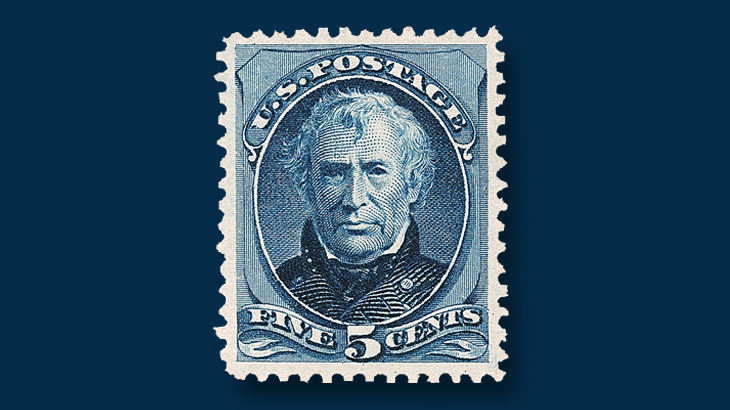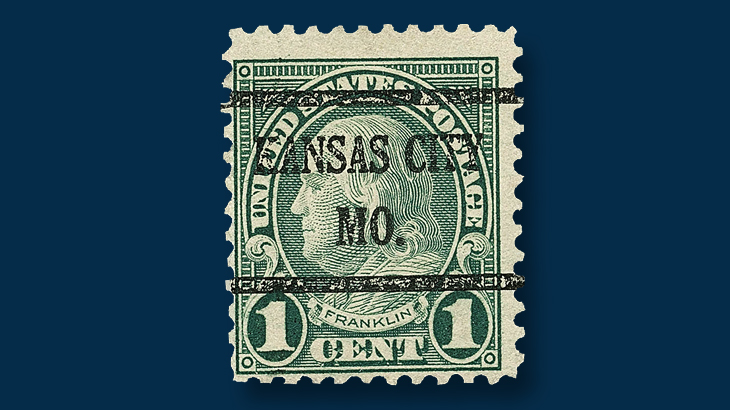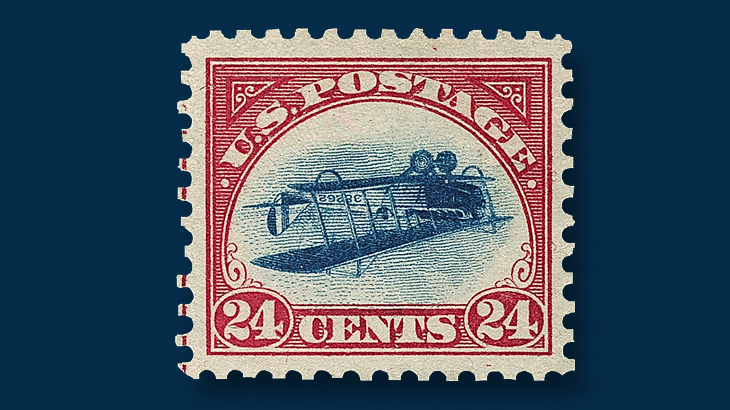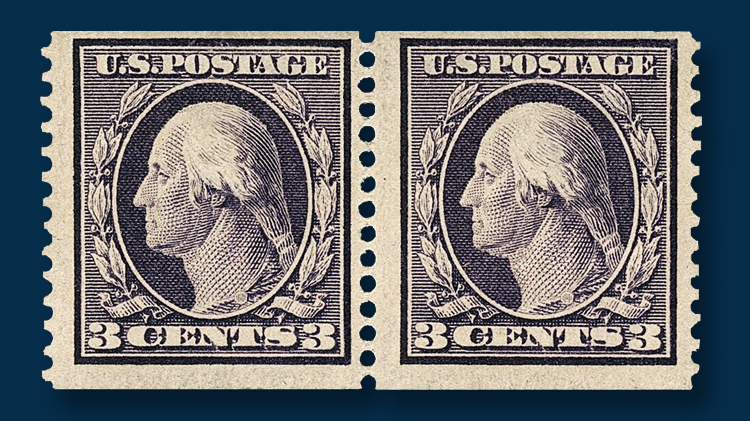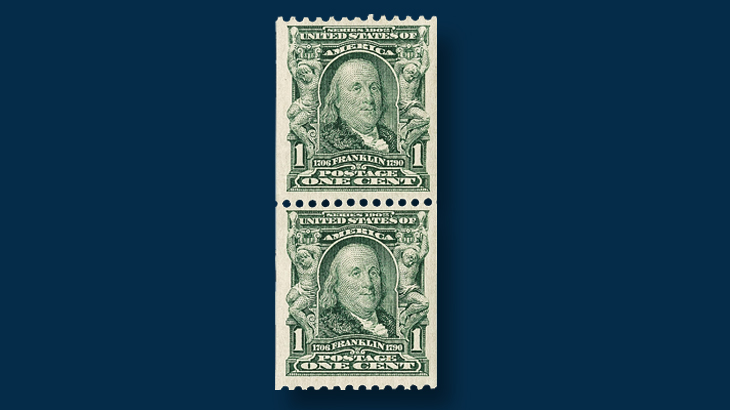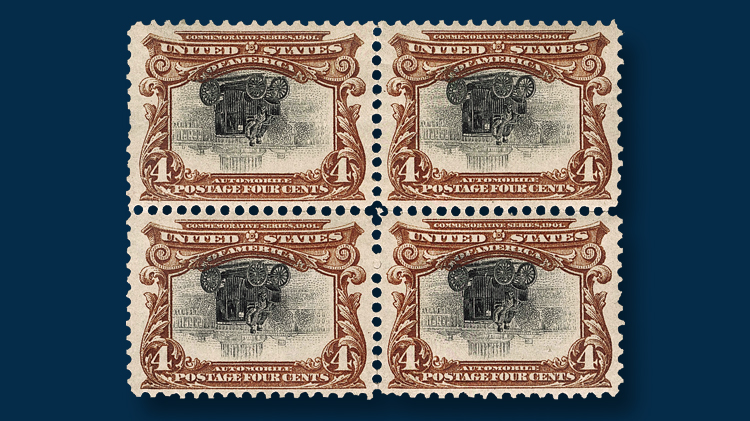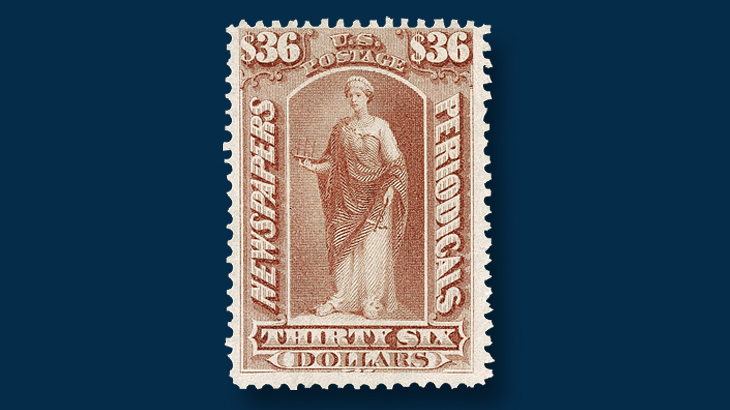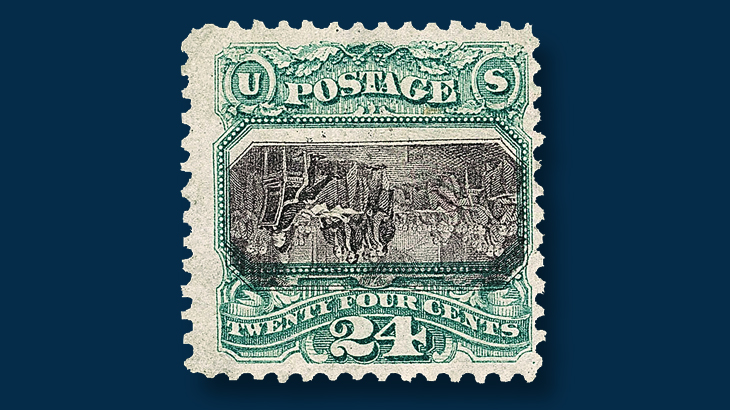Auctions
Rarities shine in Siegel sale of Wingate U.S. collection
By Tim Hodge
Robert A. Siegel Auction Galleries recently offered the David Wingate collection, one of the greatest collections of United States stamps ever assembled.
Formed throughout the 1990s and early 2000s, the quality and completeness of the Wingate collection was matched by few.
David Wingate died in 2011, but his remarkable stamp collection is now enjoyed by many through a beautifully crafted auction catalog.
With nine lots in the April 11-12 auction realizing six figures each, the mastery of this collection was truly impressive. The auction took place at the Siegel offices in New York City.
The first lot to reach six figures was an 1867 30¢ orange Benjamin Franklin stamp embossed with the A grill (Scott 81).
All eight known examples of the 30¢ A grill are postmarked. Also, all known examples are faulty in some way. The A grill covered the entire stamp, which made the paper extremely brittle, causing tearing.
The example in the Siegel auction has serious perf flaws and a small tear. It realized $177,000, including an 18 percent buyer’s premium.
The star of Wingate’s inverted center stamps was his unused 1869 24¢ green and violet Declaration of Independence invert (Scott 120b). Only three unused examples are available to the public. The only sound example sold in 2008 for $1.27 million breaking the record for the highest price paid for a single U.S. stamp. The Wingate example bears a small thin and still sold for a substantial $619,500.
Connect with Linn’s Stamp News:
Sign up for our newsletter
Like us on Facebook
Follow us on Twitter
One of the rarest of the U.S. special printings is the 1880 5¢ deep blue Zachary Taylor large Banknote stamp on soft paper (Scott 204). Only 18 examples appear in the Siegel census, and it has the highest Scott catalog value of any of the special printings.
The U.S. Post Office Department reprinted examples of stamps in 1875, 1878, 1880 and 1883 to be sold in extremely small quantities to collectors.
One of the finest of the 18 known Taylor special printing stamps, the example in the Wingate collection sold for $224,200.
The 1901 1¢ and 2¢ Pan American inverts were initially unintentionally distributed by the post office. However, inverts of the 4¢ deep red brown and black Electric Automobile stamp in the same series did not exist until the third assistant postmaster general requested that any inverts discovered be sent to his office. The Bureau of Engraving and Printing then took the initiative to print four panes of 100 of the 4¢ with an inverted center and sent them to him.
Fewer than 200 were then distributed as gifts to prominent individuals. The Wingate collection included a block of four 4¢ inverts, the finest of the six recorded blocks of four. It realized $365,800.
The government began to experiment with coils in 1908, taking regular sheet stamps, perforating them in one direction and cutting them in the other direction.
These strips were then pasted together into longer coil strips.
One of the first experimental coils was created in 1908 using the 1903 1¢ blue green Benjamin Franklin stamp. One of the better of the nine vertical coil pairs (Scott 316) listed in the Siegel census was offered as part of the Wingate collection. The new owner paid $200,600.
The experimental coils were quickly superseded by regularly produced Washington-Franklin coils. However, varieties were produced for specific bulk mailing companies, such as the 1911 3¢ deep violet type I George Washington coil vertically perforated gauge 12, created for a mailing by the Bell Pharmaceutical Co. (Scott 389).
Bell was based in Orangeburg, N.Y., and these stamp rarities are commonly referred to as the Orangeburg coils.
Only six unused pairs are known in private hands. Probably the best centered is the Wingate example, which found a new home for $188,800.
In the early 1920s, sheets were produced specifically for use as coil stamps using a rotary press. However, a few sheets of the 1¢ green Washington (Scott 544), the 1¢ green Franklin (594 and 596) and the 2¢ black Harding (613) were perforated gauge 11 in both directions. The two Franklins are from a horizontal rotary printing (594) and vertical (596). Rotary press stamps have a slightly stretched design in the direction the stamps are printed. Only 15 examples of the “tall” 1¢ Franklin (596) are known to exist, all used or precanceled. Selling for $224,200, the Wingate precanceled stamp is one of only four sound examples.
The most famous inverted center error is, of course, the 1918 24¢ Jenny Invert from the nation’s first airmail series (Scott C3a). The design shows the blue Curtiss Jenny airplane flying upside down in the carmine rose frame.
The Wingate example of this famous error comes from position 86 on the only sheet of 100 errors ever discovered. It was once part of a block of eight in the Colonel Green collection, later divided into the famous plate block of four, an arrow pair and two singles.
Described as extremely fine and one of the best centered examples of the Jenny Invert, the stamp sold for $483,800.
The special printings from the Continental and American Bank Note companies did not just produce postage stamps, they also created Official stamps and revenues, although these were not valid for postage.
Only two examples were sold of the 1875 reprinting of the $36 brown rose newspaper stamp (Scott PR54). However only one of these has surfaced since the original sale. This uniquity from Wingate’s collection realized $395,300.
MORE RELATED ARTICLES
Headlines
-
US Stamps
Oct 6, 2024, 5 PMApgar souvenir card available
-
US Stamps
Oct 6, 2024, 4 PMFirst Continental Congress and U.N. stamps receive Scott catalog numbers
-
World Stamps
Oct 5, 2024, 1 PMCanada Post continues Truth and Reconciliation series
-
US Stamps
Oct 4, 2024, 6 PM86th Balpex show set for Oct. 25-27 at new location
